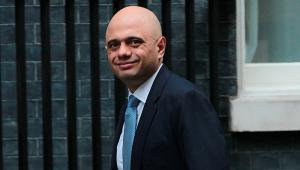The business rates retention scheme was introduced in England in 2013–14 with the aim of incentivising councils to promote local economic growth.
Under the main scheme, councils bear up to 50% of real-terms changes in local business rates revenues – meaning greater financial risk as well as stronger financial incentives.
In April 2017, four city regions (and Cornwall) began piloting 100% retention (of the real-terms changes in their business rates revenues).
This month a further 11 pilot areas joined them.
The government’s stated aim in setting up these pilots is to learn about how national 100% retention might work.
We also disagree with the government’s claim that the pilots are ‘cost-neutral at the point of delivery’.
The basis for this claim is that those councils moving to 100% retention are at the same time forgoing certain funding streams and seeing adjustments to the ‘tariffs’ and ‘top-ups’ they face as part of the BRRS.
However, these adjustments are in effect based on real-terms business rates revenues as of 2013–14.
As a result, pilot councils will retain 100% rather than 50% of any real-terms changes in revenues since 2013-14 – not just from when they joined the pilot schemes (in April 2017 or April 2018).
Using councils’ forecasts of their 2018–19 rates revenues, we have estimated that pilot councils will receive extra funding of £873m in 2018–19 due to the pilot schemes, corresponding to an average increase of around 3.6% in their core spending power.
This is because almost all pilot councils have seen real-terms growth in business rates revenues since 2013–14.
The extra funding received by councils that are currently pilots represents a cost to central government, which could have been spent in other ways.
The implications of this are significant for some pilot areas – London councils, for example, are forecast to receive an extra £431m (equivalent to 4.9% of core spending power or £49 per person) and the Berkshire pool an extra £53m (8.4% or £59 per person).
On the other hand, in areas where rates revenues have grown less strongly since 2013–14, pilot councils are forecast to see smaller gains – Liverpool, for example, is set to receive £2m , equivalent to only 0.6% of its core spending power or £5 per person.
What about those areas that are not currently pilots?
Our estimates suggest some of those could have benefited significantly if they had been chosen instead or in addition to existing pilots. For instance, councils in Northamptonshire could have seen a funding increase of £28m, equivalent to 5.5% of their core spending power, or £38 per person.
Depending on pooling arrangements, a significant fraction of this could have gone to the financially troubled county council.
A similar calculation for the proposed ‘One Yorkshire’ area suggests that if the 18 councils involved had formed a pilot pool, they would have received £73m in extra funding (equivalent to 2.3% of the member councils’ core spending power, or £17 per person).
The extra funding received by councils that are currently pilots represents a cost to central government, which could have been spent in other ways: it seems highly unlikely that the underlying growth in rates revenues has been driven by behavioural responses to pilots that have been in place for at most a year.
In our paper we have modelled a situation where the extra funding were instead allocated across all councils according to their officially assessed spending needs.
Most pilot councils receive more funding through the pilot schemes than they would have under such a distribution. But some pilot councils would have been better off under such an approach.
These tend to be metropolitan districts with low revenue growth and/or high needs, such as Liverpool and Oldham. All non-pilot areas, of course, lose out under such a comparison.
Northamptonshire’s various councils, for example, could have shared an additional £10m from needs-based funding.
Looking beyond the next year, the government plans to introduce 75% retention in 2020–21.
Since no end date has been set for the pilot schemes, it is not clear what this will mean for pilot areas.
There are, presumably, two options.
Either pilot areas will see a move from 100% down to 75% retention – one which they are unlikely to be enthusiastic about – or the pilots will continue indefinitely.
The latter option, creating a long-term divide between areas retaining 100% of their real-terms changes in revenues and those retaining only 75%, would represent an unintended boost to one group of councils at the expense of the rest of the country.
A better solution must surely be found.




















